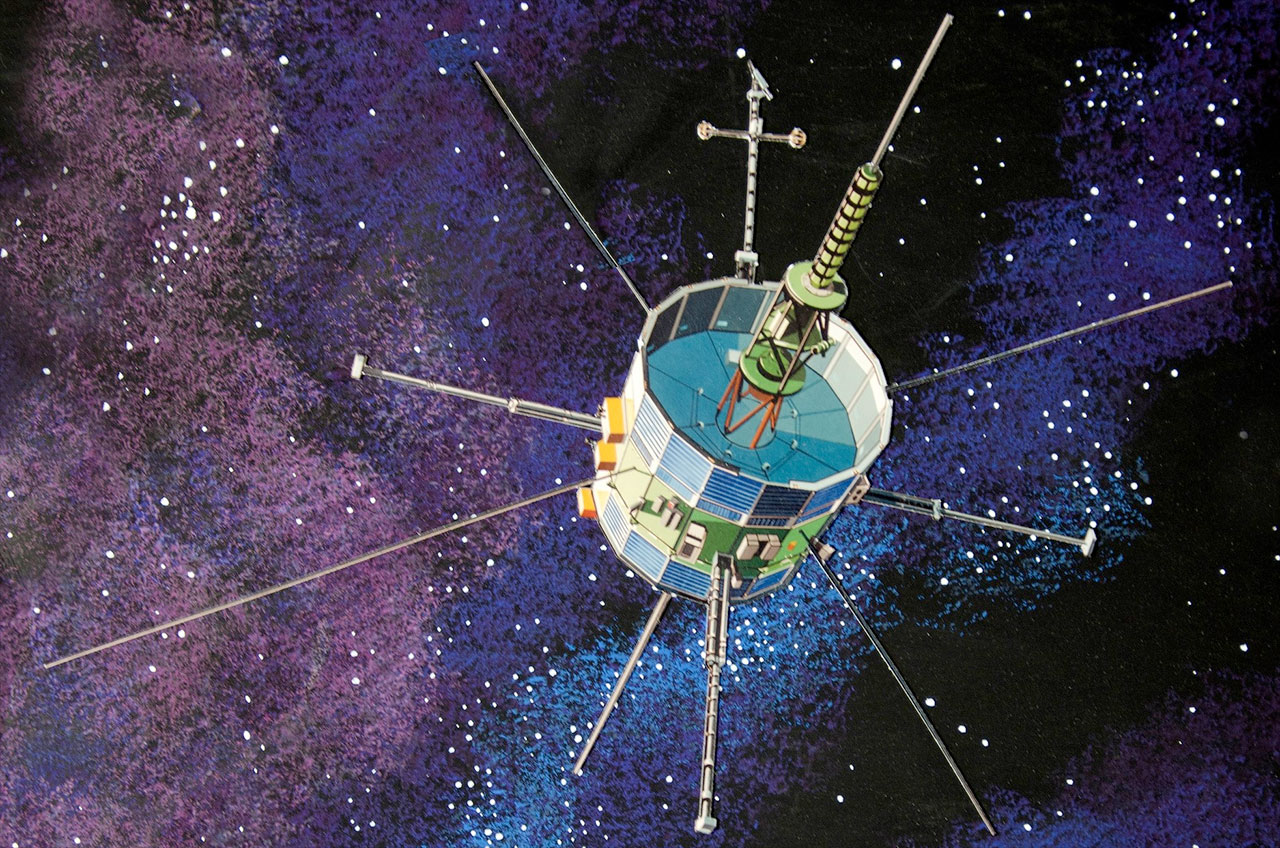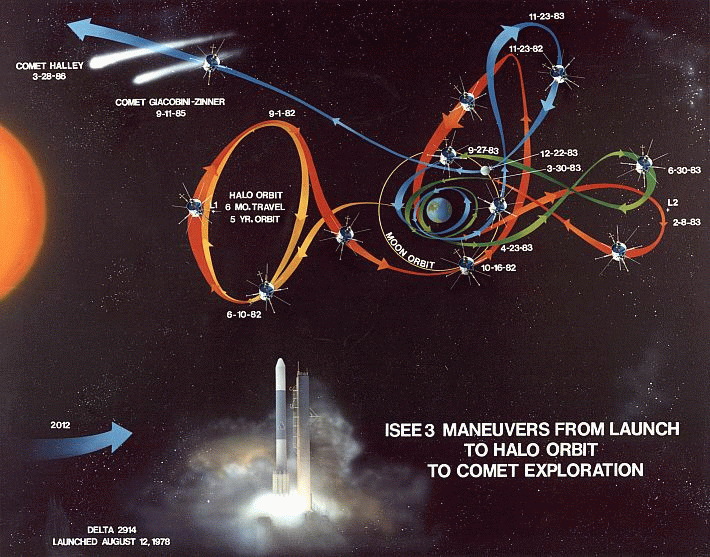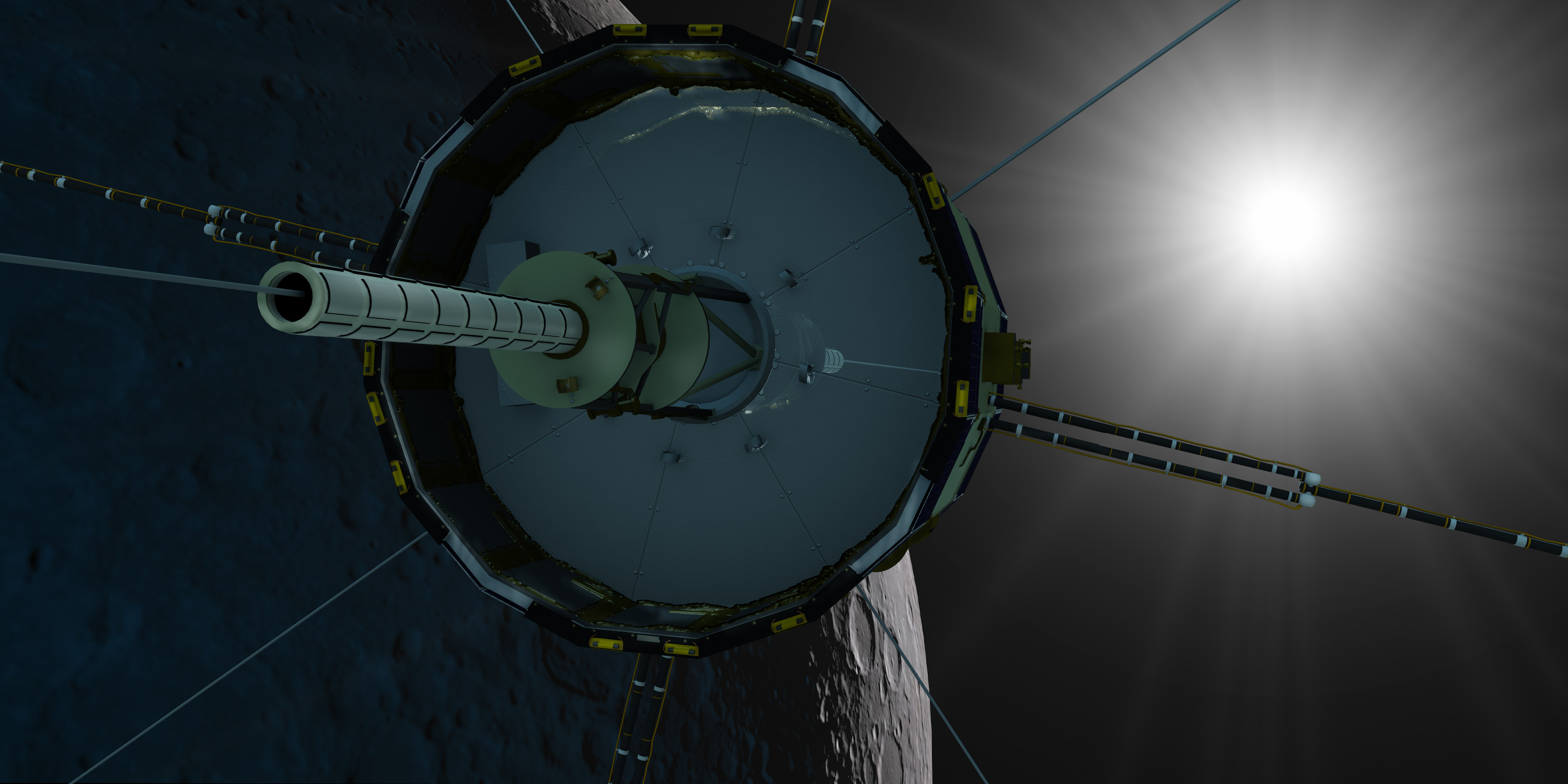Private Team to Restart Engines on 36-Year-Old NASA Spacecraft

A decades-old spacecraft appears to be in great health despite being abandoned in the solar system for the better part of two decades, the private team working to revive the NASA probe says.
All instruments are on and NASA's International Sun/Earth Explorer 3spacecraft, or ISEE-3 for short, is responding to hails from its new command team, which hopes to send the probe on new adventures in deep space.
The team, called the ISEE-3 Reboot Project, is working out of a former McDonald's near NASA's Ames Research Center in Moffett Field, California. So far, the team has been gathering information on where the spacecraft is moving, how fast it is spinning and how much power it has. [NASA's ISEE-3 Spacecraft in Photos]
ISEE-3 has ample power (a surplus of 28 watts) and its instruments are all turned on, although how well they are functioning will require further investigation, said team co-leader Keith Cowing.
"We need to understand [the spacecraft] before we fire the engines for the main thrust," he told Space.com. That will likely come on June 17, and it is intended to eventually put ISEE-3 in a stable spot where it can reliably communicate with Earth.

Moving day
The team made contact with the spacecraft in late May under a Space Act Agreement with NASA. It's the first time any private entity has taken over a spacecraft, leading to careful discussions on both ends about what is allowed. The current communications agreement runs through June 25, but Cowing said it's an incremental date expected to be extended.
Get the Space.com Newsletter
Breaking space news, the latest updates on rocket launches, skywatching events and more!
The project's ultimate goal is to make the spacecraft available for more science, although what ISEE-3 will do is still not known. Since being launched in 1978, the spacecraft has been a comet chaser, a solar probe and more. NASA ceased communications with it in 1997.
The spacecraft first, however, needs to be moved. Cowing projects the first firings will need to change ISEE's speed by about 6 meters (20 feet) a second. He said the best "guesstimate" of fuel available shows plenty of margin: there's enough to alter the spacecraft's speed by 150 meters (492 feet) a second.
Team members want to eventually place ISEE-3 in the Earth-sun Lagrange Point 1 (ES-1), a gravitationally stable spot about 930,000 miles (1.5 million kilometers) from Earth. Cowing said it might be August or September before that happens, but the timeline isn't firmed up yet.
If all goes to plan, the spacecraft will also head behind the far side of the moon for about 25 minutes, which is somewhat risky given there's no working battery. Cowing pointed out, however, that the spacecraft has done it before, and said they will likely leave the instruments on to give it a bit of extra heat as it passes behind.

Communications challenges
Keeping track of the spacecraft will be somewhat more difficult as it approaches Earth, because its position changes more rapidly from our viewpoint. Right now the team is remotely using the massive fixed-dish Arecibo Observatory in Puerto Rico.
Within a week, they hope to have supplemental communications at Morehead State University, although the first engine firing at least will likely take place with Arecibo.
Meanwhile, at least a couple of amateurs have been able to track ISEE-3's radio communications using small dishes. As the spacecraft gets closer to Earth, Cowing said he is curious if university optical telescopes will be able to pick out the small craft. (It's about 15 million to 20 million miles away, and moving closer at about a quarter-million miles a day, he said.)
Cowing said that he is amazed at how healthy the spacecraft is. "It's almost like people going to the Antarctic, and discovering something somebody left behind half a century ago, frozen, still works."
Follow Elizabeth Howell @howellspace. Follow us @Spacedotcom. We're also on Facebook and Google+. Original article on Space.com.
Join our Space Forums to keep talking space on the latest missions, night sky and more! And if you have a news tip, correction or comment, let us know at: community@space.com.

Elizabeth Howell (she/her), Ph.D., was a staff writer in the spaceflight channel between 2022 and 2024 specializing in Canadian space news. She was contributing writer for Space.com for 10 years from 2012 to 2024. Elizabeth's reporting includes multiple exclusives with the White House, leading world coverage about a lost-and-found space tomato on the International Space Station, witnessing five human spaceflight launches on two continents, flying parabolic, working inside a spacesuit, and participating in a simulated Mars mission. Her latest book, "Why Am I Taller?" (ECW Press, 2022) is co-written with astronaut Dave Williams.









